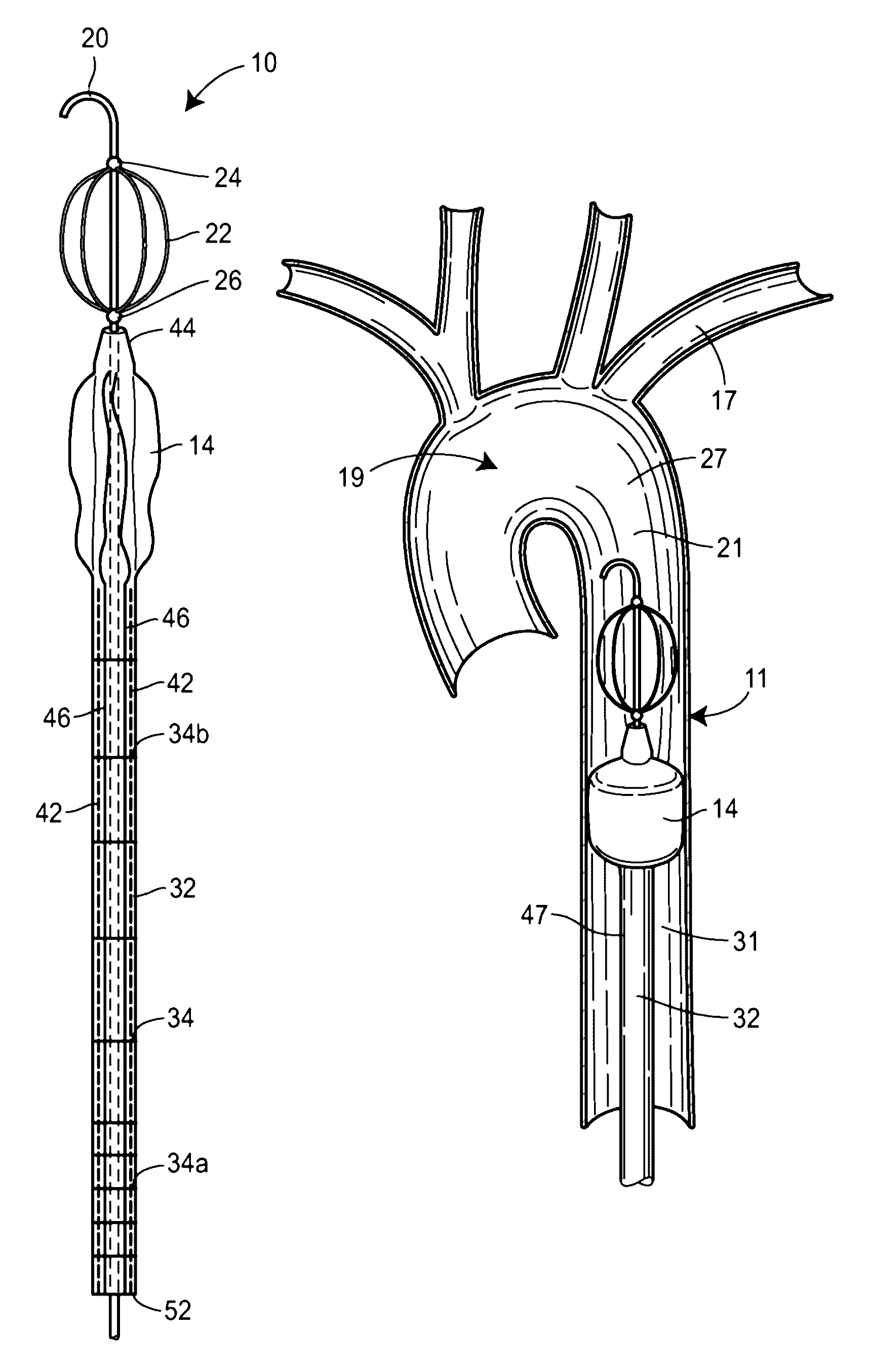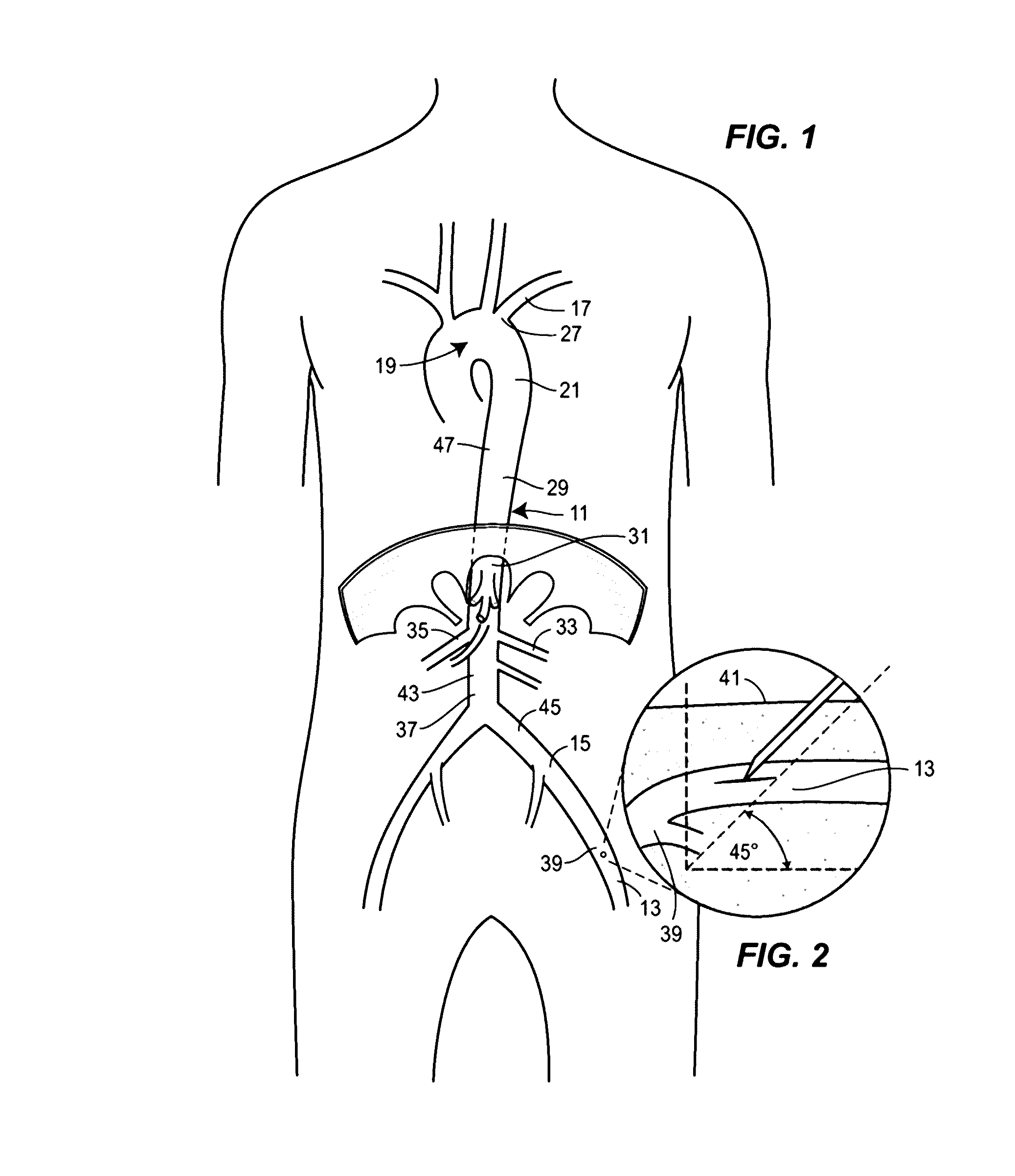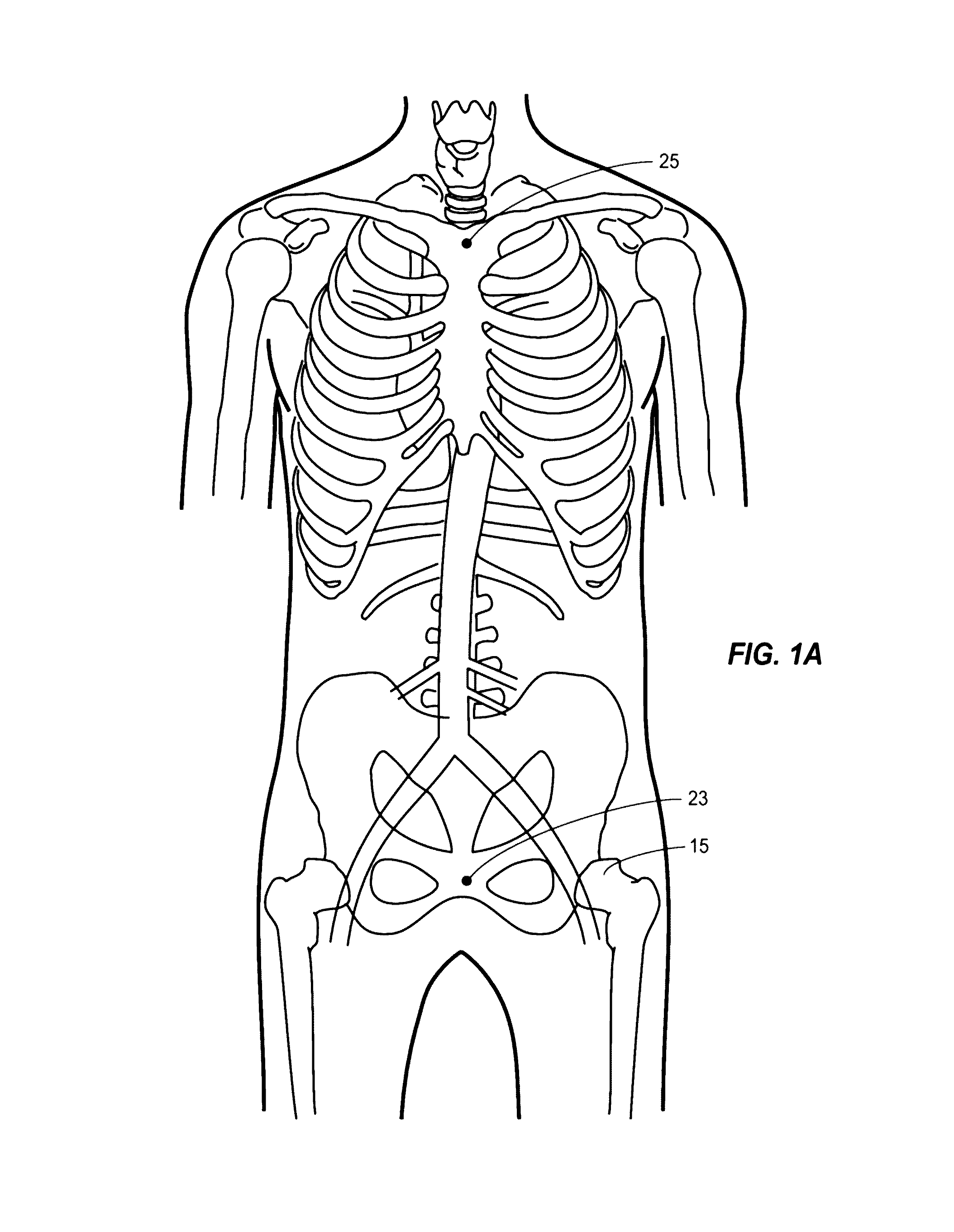Fluoroscopy-independent balloon guided occlusion catheter and methods
a technology of fluoroscopy and balloon guide, applied in balloon catheters, medical science, surgery, etc., can solve the problems of neurological death, cardiac arrest, and difficulty in applying vascular clamps, and achieve the effect of reducing the risk of strok
- Summary
- Abstract
- Description
- Claims
- Application Information
AI Technical Summary
Benefits of technology
Problems solved by technology
Method used
Image
Examples
Embodiment Construction
[0035]Using a sufficiently broad pool of human patients from which statistically reliable data may be drawn, it is possible to mathematically derive a correlation (i.e., nomogram) between readily measurable external torso landmarks and the dimensions of the human aorta within the abdomen and thorax. As used herein, the term nomogram includes one or more tables, charts, graphs, or other visual depiction of a correlation of data. More specifically, it is possible to define, using this easily discernable and consistently located external measure of torso extent, the anticipated lengths or distances of arterial anatomy, i.e. arterial morphometry, between functionally important locations within the torso. This mathematical correlation or nomogram will allow determination of the appropriate distance with which to insert an endovascular wire and aortic occlusion balloon into the torso aorta without the need for fluoroscopy (x-ray). In other words, the nomogram will allow a rapid measure of...
PUM
 Login to View More
Login to View More Abstract
Description
Claims
Application Information
 Login to View More
Login to View More - R&D
- Intellectual Property
- Life Sciences
- Materials
- Tech Scout
- Unparalleled Data Quality
- Higher Quality Content
- 60% Fewer Hallucinations
Browse by: Latest US Patents, China's latest patents, Technical Efficacy Thesaurus, Application Domain, Technology Topic, Popular Technical Reports.
© 2025 PatSnap. All rights reserved.Legal|Privacy policy|Modern Slavery Act Transparency Statement|Sitemap|About US| Contact US: help@patsnap.com



